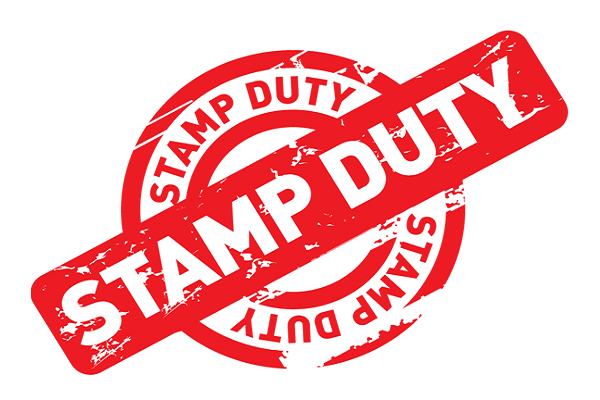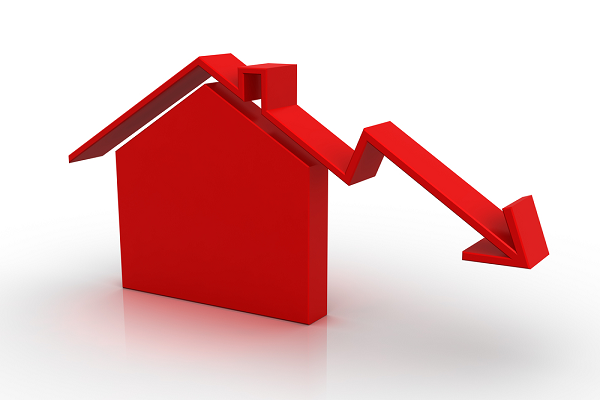Funding A Property Purchase for a Family Member
Bridging finance specialists across the UK have noted an uptick in applications from parents looking to help get their kids on the property ladder. Not that this is particularly surprising when considering the unprecedented difficulties being faced by first-time buyers.
In May, the average house price in the UK hit another record high of £289,099. This represents an increase of more than £2,850 from the previous month or 1%. House prices have now soared to record highs for 11 consecutive months and are up an astonishing 10.5% from the same time last year.
The likelihood of house prices falling over the coming months is minimal, but there are at least signs of a modest slowdown in house price acceleration.
“Yes, prices have still risen 1 per cent on the month, marking the eleventh successive monthly increase, and yes, prices are up by 10.5 per cent on the year, keeping annual price growth in double digits, but this is the slowest rate of growth since the start of the year and shows the challenges ahead cannot be ignored,” commented Alice Haine, Personal Finance Analyst at investment platform Best Invest.
“With mortgage rates surging, following four consecutive interest rate rises from the Bank of England since December and further hikes expected this year, and inflation of 9 per cent eating into real incomes, it is only natural that prospective buyers may take a pause before plunging into the market right now.
“Add in the cost-of-living crisis and the fact fuel prices are now at record highs [petrol prices set a new average record of 178.5p per litre on Tuesday], and the cost of buying a home may deter those already struggling to meet their monthly obligations.”
Insurmountable costs for first-time buyers
Speaking on behalf of Halifax, managing director Russell Galley highlighted how impossibly expensive it is becoming to buy property in the UK.
“For house hunters, the extent of the impact of property price inflation continues to be linked to the type of home they are looking to buy,” he said.
“Compared to May last year, you would need around £10,000 more to buy a flat, but an additional £50,000 for a detached home.”
“This clearly creates a knock-on effect for those looking to make their first home move, as the rungs on the housing ladder have become increasingly wide.”
For first-time buyers, pulling together a ten per cent deposit for an average UK home now means saving at least £30,000. Where lenders insist on 15% or 20% deposits, the figure could be as high as £60,000.
Even last year, when average house prices were lower than today, data from Barclays indicates that the average deposit paid by a sole first-time buyer was £61,100.
This is the kind of money the typical first-time buyer simply cannot come up with. Faced with an escalated cost-of-living crisis, the dream of homeownership for millions of prospective buyers is likely to remain just that.
House prices are up a staggering £123,016 (or 74%) over the past decade, during which wages for many have stagnated.
Tomer Aboody, director of property lender MT Finance, said: “With prices rising by 74% in the past decade, it shows just how much the market is running away from first-time buyers,” commented Tomer Aboody, director of property lender MT Finance.
The bank of mom and dad
Traditionally, parents looking to help their children get on the property ladder have provided financial support in the form of a contribution to their deposit. With deposit requirements at an all-time high, many first-time buyers are finding this the only realistic way to qualify for a mortgage.
Elsewhere, first-time buyers (and their families) are setting their sights on properties away from the conventional housing market. With affordability and accessibility in mind, many are looking to purchase properties in need of renovations and repairs with the aim of gradually moulding them into their dream homes.
This approach has generally proved problematic for first-time buyers seeking funding from mainstream lenders. The vast majority of High Street banks are unwilling to lend against properties in a poor state of repair, which are often categorised as ‘not mortgageable’.
For example, if a property lacks a functional kitchen or a working indoor bathroom, it may be completely out of the running for a conventional mortgage.
This is where bridging finance is proving to be a lifeline for first-time buyers across the country. Bridging loans differ from conventional home loans in that they can be used to purchase any type of property in any state of repair. They are also designed to be repaid as promptly as possible, usually within 1 to 18 months of being issued.
How bridging finance is helping first-time buyers
To understand how parents are using bridging finance to help their children buy their first homes, consider the following everyday example:
- A property is set to go under the hammer at auction for considerably less than its true market value, as it requires considerable repairs and renovations to bring it up to a liveable standard.
- The parents of the first-time buyer take out a bridging loan, using their own home as security for the facility. Bridging finance can be arranged within just a few working days, making it ideal for time-critical home purchases and investment opportunities.
- A bridging loan is provided to cover the full costs of the property and those of the subsequent renovations. The property is purchased at the auction, payment is made in full, and the new owners begin the renovations.
- Several months later, the property has been brought up to an excellent standard and is no longer classified as not mortgageable. The property is remortgaged onto a longer-term repayment facility (like a conventional mortgage), and the bridging loan is repaid.
- In the meantime, the bridging loan will be charged at a rate as low as 0.5% per month, making it a hugely cost-effective product when repaid promptly.
What is important to note about this approach to purchasing a home are three things:
- There is no need to come up with any kind of deposit whatsoever, as no deposit is payable on a bridging loan. This means first-time buyers (with the assistance of their parents) with limited on-hand savings need not be counted out of the running.
- Bridging finance opens the door to the kinds of property purchases that would be out of the question with a conventional mortgage. Particularly when it comes to fixer-upper homes in questionable condition, traditional mortgages are typically unavailable.
- Prompt repayment of a bridging loan can make the transaction in its entirety so much more affordable than arranging any conventional loan or mortgage. Monthly interest can be as low as 0.5%, and all other associated borrowing costs are negligible.
Given the estimated 200,000 properties in England that have stood unoccupied for six months or more, bargain hunters are advised to extend their search beyond the conventional property market.
Flexible finance for homeowners
Bridging finance is also a significantly more flexible and accommodating facility than any conventional mortgage. This can be particularly useful for applicants who are unable to provide formal proof of income or may have imperfections on their credit file.
Likewise, homeowners who are retired and would likely be turned down by high-street banks are also eligible for bridging finance.
Qualification criteria for bridging finance are not nearly as strict as conventional mortgage eligibility checks.
Bridging loans are issued on the basis of the following:
- Ownership of assets of sufficient value to cover the costs of the loan, i.e., the property of the applicant.
- Evidence of a workable exit strategy in reference to how and when the loan will be repaid by the borrower
A good credit score and evidence of a stable financial position will pave the way for a more competitive product. But even with poor credit, no proof of income, and a history of bankruptcy, it is still perfectly possible to qualify for bridging finance.
Consult with an experienced broker
If you are considering taking out a bridging loan to help a member of your family get on the property ladder, independent broker support is highly recommended.
Bridging finance is issued in a variety of forms with different purposes in mind, so it is important to know which type of bridging loan is right for you. Your broker will also be able to advise on the alternative financial products available if there is something that could prove more cost-effective than a bridging loan.
Your broker will negotiate on your behalf to ensure you get an unbeatable deal from a top-rated lender. Many of the UK’s leading bridging specialists offer their services exclusively by way of broker introductions and do not deal with customers directly.
For more information on any of the above or to discuss the potential benefits of bridging finance in more detail, contact a member of the team at UK Property Finance today.
Average London House Prices Hit a New All-Time High in May
The buoyancy of the London property market continued to impress throughout May, with average house prices once again hitting a new record high. Even as the UK’s escalating living-cost crisis was hitting households hard, the average price of a home in London hit an astonishing £526,183, more than 8% up on the previous year.
Detached homes in London saw the biggest annual price growth of all—up just over 11% to reach £1,082,09, compared to £973,866 in May 2021.
However, monthly house price growth in London has slowed significantly, with average property prices for May coming out just 0.2% higher than those of April.
Barking, Dagenham, and Barnet recorded the highest annual property price growth by district, both up by 11.4%.
“With the Bank of England putting up interest rates more than once this year, many house hunters have also established a stronger sense of urgency to buy before further rate hikes,” commented Richard Davies, managing director of London agents Chestertons.
“Our branches receive inquiries from families, couples, and investors, but, particularly post-pandemic, we are seeing an uplift in the number of international students, international buyers, as well as office workers who require a pied-à-terre closer to work.”
Elsewhere, Jeremy Leaf, a North London estate agent, said that much of the market’s explosive performance could be credited to the temporary availability of ultra-low mortgage rates.
“As we are finding at the sharp end, prices are continuing their upward path, despite the impact of 40-year high inflation and five successive interest rate rises,” he said.
“However, the continuing lack of choice, combined with a desire to take advantage of mortgage offers at super-low rates before they expire, have given the market added impetus.”
London is lagging behind the rest of the UK
Even with such explosive annual growth, London continues to lag behind the rest of the country. According to the latest Land Registry figures, average UK property prices for May were up a huge 12.8% compared to the same time last year.
The South West recorded the highest annual house price growth of all, coming out at 16.9% over the course of 12 months.
“As we move into the summer months, it is likely this growth will continue as housing purchases naturally increase at this time of year, inevitably pushing prices up further,” said Stuart Law, CEO of the Assetz Group.
His sentiments were echoed by Yopa Chief Analyst Mike Scott, who believes there is no immediate slowdown on the horizon.
“There is as yet little sign in the figures of the widely expected slowdown in response to increases in interest rates and the cost of living, with the housing market proving to be surprisingly resilient,” he said.
Priced out of contention
While homeowners across the UK continue to reap the windfall of skyrocketing property prices, millions are finding themselves priced out of the market entirely. Particularly in London, home to the highest average property prices in the UK, it is becoming practically impossible for low- and average-income households to relocate to the capital.
New figures released by the Office for National Statistics (ONS) suggest that the average price of a property sold in England (in the year to the end of March) was approximately £275,000. As the average annual disposable household income in England is just £31,800, the average home costs 8.7 times this amount.
Affordability ratios are particularly disproportionate in London, where an average-priced home now costs the equivalent of around 40 years of income for a low-income household.
“The government has a great deal to answer for when it comes to the plight of today’s homebuyer, and the blame can’t be solely placed at the door of one mop-headed buffoon,” said James Forrester, managing director of Barrows and Forrester.
“For years, they’ve insisted on fuelling buyer demand while failing to address the severe reality of the housing crisis by actually building more homes, and this has pushed house prices to record highs.”
“As a result, the initial cost of a mortgage deposit has also spiralled and now acts as a huge financial barrier, preventing many from realising their dream of homeownership.”
With House Prices on the Rise, Millions of UK Residential Homes Move in to Higher Stamp Duty Bracket
The UK has seen more than four million homes for sale moving into a higher stamp duty tax band over the last couple of years, due to the recent house price increase.
Due to demand for properties for sale, house prices have seen a significant increase with the average cost of a residential homes skyrocketing and an average increase of 8.3% in the year to March.
According to a report issued by Zoopla, the average UK house price currently sits at £249,700, equating to a rise of £29,000 since the beginning of the covid pandemic.
March by itself, saw an increase in prices of around £441, and price growth over the last 3 months has seen a level not witnessed since back in 2007.
From the beginning of the pandemic to the end, approximately two years later, the total house price growth is recorded to be a huge 13%.
Despite this impressive increase, these figures are not evenly spread across the UK, with some regions experiencing sharp spikes in property prices, whereas in other areas homes are more affordable. For example, Wales has seen a house price growth of 12.1% whereas, the South West shows a slightly lower increase of 10.6%. London had the lowest growth at a modest 3.6%.
Zoopla’s UK House Price index also revealed a 58% increase in the demand for residential properties in the four weeks running up to the end of April, when compared with the five-year average. The number of agreed sales in the run-up to Easter this year also showed a 27% growth when compared with pre-pandemic levels.
As property prices continue on an upward trajectory, Zoopla have revealed figures estimating that around 3.5 million residential properties in England and Northern Ireland, over the last 24 months, have been pushed into the higher stamp duty tax bracket.
First time buyers have the luxury of not being required to pay any stamp duty on homes up to £300,000 in England and Northern Ireland but a whopping 1.9 million additional homes are now above that mark and are therefore subject to the higher tax.
Scotland and Wales have seen 815,000 properties move into the higher bracket showing significantly lower levels that England and Northern Ireland.
Head of research at Zoopla, Gráinne Gilmore, said: “The rise in house prices since the beginning of the pandemic, due to the demand/supply imbalance, means millions more properties are now in higher stamp duty brackets. But there are pockets of increased supply emerging, creating more choice for buyers in this busy market.”
Senior personal finance analyst at Hargreaves Lansdown, Sarah Coles, added: “The stamp duty holiday had a nasty sting in the tail. Hundreds of thousands of people have actually paid more tax, thanks to the huge hike in house prices fuelled by the tax break.
“These higher tax bills are piling yet more pressure on buyers, who are already facing the stress of rampant house price rises, hikes in mortgage rates and runaway bills, which make it increasingly difficult to cover the cost of the mortgage.
“The turning point may be precipitated by mortgage lenders, who raise rates and factor in higher costs to mortgage affordability calculations – cutting more buyers off from potential loans. Neither is likely to mean price drops, but either could significantly slow the pace of growth as we go through 2022.”
Zoopla’s report revealed that the number of homes available to buy on the market is up by 3% (on the five-year average) with some areas seeing a higher increase than others. Zoopla did warn, however, that it will still take some time for the supply to reach the levels needed, and that stock was currently sitting 40% below the 5-year average.
A 53% increase in supply has been seen in the London boroughs of Chelsea and Kensington, followed closely by a 45% increase in Erewash (East Midlands). Elmbridge in the South East and Pendle in the North West both show increases in stock of 38%.
These levels of increase in demand are starting to stabilise with house prices expected to continue to rise but at a slower pace than has been seen recently.
A 3% growth is expected in December – “but the move from 8.3 per cent to three per cent may not be a linear progression, and it may take into Q1 2023 before price growth hits this level”.
What Are the Biggest Factors Affecting Property Prices in Your Town?
Homeowners looking to get the best possible prices when selling their homes often ask their agents which factors have the biggest influence on house prices. Likewise, those looking to buy homes in the UK question why some properties of a similar specification command exponentially higher prices than others.
Now, research from the Office for National Statistics (ONS) suggests that there are three primary factors that affect property prices more than anything else.
Having studied property prices across a number of towns in England and Wales, the ONS concluded that the three most influential factors on house prices are as follows:
- The distance of the town from London
- The most common types of jobs carried out by the town’s residents
- The level of income deprivation in the town
Specifically, the study conducted by the ONS found that where a town was located within 125 miles of London, each 31 miles further from the city resulted in a property price decline of around £50,000.
Following this initial 125-mile distance, a home’s exact distance from London had less of an effect on its value.
In addition, the ONS reported that a 10% increase in the number of people employed within high-skill-level jobs within a town contributed an average of £25,000 to property prices. This encompasses high-level management positions and occupations that necessitate a degree-level education or higher.
The third of the factors was the proportion of people in the town experiencing deprivation on the basis of low income, which likewise had a major impact on property prices.
Outside the top three, the ONS reported that a town’s distance from the nearest city, the average age of its residents and the size of the town all had an impact on house prices, though to a lesser extent.
The findings followed a previous report from the ONS published late last year, which detailed how average house prices in UK towns in 2020 varied from £1,050,000 in Northwood, northwest London to just £39,000 in Ferryhill, Co Durham.
On average, house prices in the UK have increased by more than 10% over the course of the past 12 months. Regional disparities were clear in the findings, with six of the 10 towns recording the fastest property price growth being in the southeast of England. By contrast, six of the 10 regions with the slowest growth were situated in the northeast.
Average house prices continue to skyrocket across the UK as a whole, pricing millions of potential first-time buyers out of the market entirely. The latest figures indicate that the average price of a property in the UK is now £277,000 – up more than £27,000 on the same period last year.
It now costs around £296,000 to buy a house in England, £205,000 to buy a home in Wales, £181,000 to buy a home in Scotland and £159,000 to get on the property ladder in Northern Ireland.
Average London Rents up 22% as Return to City Life Accelerates
London’s private rental market experienced an unprecedented decline in popularity during the pandemic, as millions exited the UK’s biggest towns and cities in search of solace and safety elsewhere. Working from home became the new norm, and it was no longer necessary to pay extortionate prices to rent properties in and around London.
Today, data suggests the return to city life is well underway, as average London rent prices accelerate at their fastest pace on record.
This year to date, a full 30% of all new tenancies in London have been secured by individuals moving into the capital from other parts of the country. That’s according to the Hamptons Letting Index, which also indicates a massive 12.3% average increase in monthly rental costs in London over the past 12 months.
On average, it now costs £1,886 to rent a home on the private market in London, up from £1,680 per month this time last year.
The figures for Inner London are even more astonishing, where average monthly rent prices have skyrocketed by 22% over the course of 12 months. It now costs £2,513 to rent an Inner London home today, £500 more than a year ago.
An impressive rebound
The capital’s return to popularity and prosperity has been impressive, considering that just 12% of new tenants in London came from outside the city in 2020. After this, millions set their sights on more affordable rental homes outside London or moved back in with their parents temporarily to save money.
According to the figures from the Hamptons, most of those heading back into London are relocating from Berkshire, Buckinghamshire, Essex, Hertfordshire, Kent, or Surrey.
Speaking on behalf of Hamptons, head of research Aneisha Beveridge said that the return to the new normal would most likely continue pushing average London rental prices higher.
“With COVID being pushed further to the back of people’s minds, life in the capital is slowly returning to its new normal. Tenants are returning to the bright lights of the city, and this is driving rental growth to record highs,” she said.
“The rise of remote working means that fewer tenants are moving to the capital specifically for work. In fact, a growing number of tenants choosing to live in London are working fully remotely and could live nearly anywhere in the country. The footloose nature of many jobs today means that it will be culture and lifestyle rather than employment that become the capital’s biggest draw.”
“The current pace of London rental growth is predominantly down to the capital playing catch up with the rest of the country.”
“Today, the average rent in London stands 103% above the average outside the capital. While this gap is up from 96% a year ago, it remains below the 120–30% pre-COVID premium, which has been eroded by strong rental growth outside the capital in recent years. But the current pace of rental growth in London is likely to push the premium closer to its pre-COVID level within two years.”
Average UK House Prices Climb £19,000 in Three Months
Once again, the average asking price for a home in the UK has leapt to an all-time high, having achieved a further 1.6% growth in a single month. According to the latest figures from the Rightmove House Price Index, average property prices in the UK hit £360,101 in April, a significant increase of £5,537 compared to March.
Over the last three months, average asking prices for UK homes have skyrocketed by more than £19,000. This is the highest three-month climb in the history of the Rightmove House Price Index, indicating that the escalating economic crisis is having no impact whatsoever on UK house prices.
Remarkably, the housing market’s performance during the first four months of 2022 has been even more explosive than at any point during the government’s temporary stamp duty holiday. According to Tim Bannister, director of property data at Rightmove, the market’s record-breaking performance continues to be a product of the growing gap between demand for affordable properties and available inventory.
“While growing affordability constraints mean that this momentum is not sustainable for the longer term, the high demand from many buyers chasing too few properties for sale has led to a spring price frenzy, a hat-trick of record price months, and the largest price increase for three months Rightmove has ever recorded,” he said.
No sudden slowdown on the horizon
Mr Bannister went on to say that while an eventual slowdown may be inevitable, it will almost certainly be gradual, far from a ‘burst bubble’ as some had predicted.
Elsewhere, Geoff Garrett, director of Henry Dannell, stated that home sellers and buyers alike should be braced for turbulent times ahead.
“While we don’t expect to see market activity evaporate completely, the growing cost of living will be a significant factor in the months to come, and as household finances are stretched, prospective buyers will likely ease off on the sums they’re willing to offer,” he said.
“As a result, sellers will need to realign themselves with these changing market conditions, and this will cause the rate of house price growth to cool.”
Data published by Rightmove indicated that more than 50% of all homes being sold in the UK are selling for their full asking price or higher. This is, again, a record high for the company’s House Price Index.
The average time it takes for a seller to find a buyer for their home is currently just 33 days—less than half the time it took to sell a home on average in 2019 when the average was 67 days.
“Over 125,000 new sellers have taken advantage of the great sellers’ market this month, but more are needed in all areas and in all property sectors to meet high buyer demand,” added Bannister.
Meanwhile, Christina Melling, chief executive at digital professional service provider Stipendium, highlighted the extent to which skyrocketing property prices are making it even more difficult for newcomers to find their way on the UK’s increasingly elusive property ladder.
“Unfortunately, it’s the nation’s first-time buyers who are paying the price, and those looking to take that first step are now paying £2,000 more for the pleasure compared to just one month ago,” she said.
“It’s yet another brick in an already substantial financial wall that’s blocking many from realising their dreams of homeownership.”
Rental Rates to Rise by Around £800 Per Annum Causing Financial Difficulty for Many Tenants
Experts from rental platform Ocasa are warning that in as little as a year’s time, rental rates could rise by as much as a whopping £800 per year for most tenants.
Even though the rental market in the UK is somewhat back on track following the COVID pandemic and the inevitable lockdowns, the report by Ocasa revealed that the average cost of a rental property is now £12,936 per year for tenants across the UK.
The yearly cost of renting a property has already increased by £1,032 in the last twelve months, and the report expects this figure to rise even more in the coming year. It is predicted that increases of around £803 in the next year will be a reality, making it even more difficult for tenants to meet their monthly rental obligations and making it even more challenging to save a deposit in order to get onto the property ladder. So looking forward to this time next year, tenants will be paying, on average, £13,739 for their annual rent.
Where are the biggest increases?
It’s no surprise that London has the country’s highest rental rates and is therefore the area that is least affordable to most tenants. The average rent in the capital is currently £21,140 per year, a figure significantly higher than the rest of the UK. The report shows that Londoners can expect to see a hike in rental charges of £1,140 per year in the next 12 months.
Despite London being the most expensive place to rent, when looking at percentages, the North West is predicted to see the sharpest increase in rental rates in the next twelve months. The average price for rental property is currently £10,452, but Ocasa has forecast a significant rise of £1,504 by this time next year.
The third-largest increase can be seen in the East of England, where tenants are now paying on average £12,528 but are expected to be paying £13,426 in the next twelve months, equating to an increase of £898.
The South West will see a rental hike of around £790 in the same time period, while the South East will see rises of £750, and the East Midlands are predicted to see a £717 rise in rent per year.
The lowest figures in the report relate to the North East, where increases will, on average, equate to £617 over the next twelve months.
A spokesperson for Ocasa comments: “Despite a rather unsettled rental market landscape as a result of the pandemic, the average UK tenant is still paying over a thousand pounds more a year versus just 12 months ago.”
“This cost is set to climb even further over the next 12 months, and this will be particularly concerning for those residing within the sector.”
They add, “Renting is already the most substantial outgoing they face, but in recent weeks, many will have also seen their finances squeezed by the increasing cost of living.”
“When you add an increase in rental costs to this mix, it paints a very bleak picture for the year ahead.”
Property Sales Down by Over a Third as House Prices Continue to Rise
Figures released by HMRC show house sales across the UK have seen a decline of more than one-third in March, when compared with March 2021.
Records show 11,650 home sales for residential properties took place in March, equating to a drop of 35.7% since March 2021. However, this also indicated a slight rise of 2.6% when compared with the previous month, February.
However, HMRC cautioned that these figures be treated cautiously due to the effect that the stamp duty holiday had on the property sales market, resulting in many people rushing out to buy before it was removed in September.
Initially, the stamp duty tax relief was scheduled to be finished in March 2021 but was later extended to June and then tapered to September 2021.
Managing director of Corecon, Andrew Montlake, commented: ‘The stamp duty holiday has distorted the data, so it was inevitable that transaction levels in March were down fairly significantly on the same month last year.’
‘To make matters worse, there is an extraordinary lack of stock. Transactions need buyers and sellers, and there is a distinct lack of the latter.
‘Moving forward, households face countless headwinds during 2022, primarily in the form of rising interest rates and soaring inflation, and these are likely to restrict transaction levels.
‘However, tenants remain desperate to get out of the rental market as rents hit new highs, and this will maintain a certain level of transactions. The ongoing rush to get out of the rental market may also explain why transaction levels in March were up in February.’
The chief executive of The Guild of Property Professionals, Iain McKenzie, commented that residential property sales continue to appear to ‘inhabit a parallel world when compared against all other economic indicators.’
He added, ‘Home moves are down year-on-year, but only because of a rush to buy in March last year caused by the impending end of the popular stamp duty holiday.
‘The industry continues to see a lack of properties on the market, which is pushing up prices across the board.
‘Demand remains high, and the market looks likely to keep moving upwards as it continues to ignore all the uncertainty in the rest of the economy.’
Jeremy Leaf, a north London estate agent and former RICS chairman, said: ‘Demand still comfortably exceeds supply, and correctly priced houses continue to attract considerable interest while mortgage repayments remain relatively affordable.’
Director of Legal & General Mortgage Club, Kevin Roberts, said: ‘Despite the pressure on borrowers caused by the rise in the cost of living, demand remains high, and the overall outlook for the market is strong. This is another clear reminder of the resilience of the current housing market and its ability to weather difficult conditions.
‘Even as the market experiences a healthy spring, the more complicated conditions mean that the role of advice is now more important. Borrowers may well need more support and reassurance to find the right mortgage for their needs. This is an opportunity for advisers to really demonstrate the scope of their expertise and add value during what will be a pivotal time for their clients.’
Last month, the Office of National Statistics revealed figures that show property prices have increased by 10.9% in the year to February, up from 10.2% in January.
February saw average house prices rise to £277,000, which indicates a £27,000 increase from the same period in 2021.




 0116 402 7982
0116 402 7982







